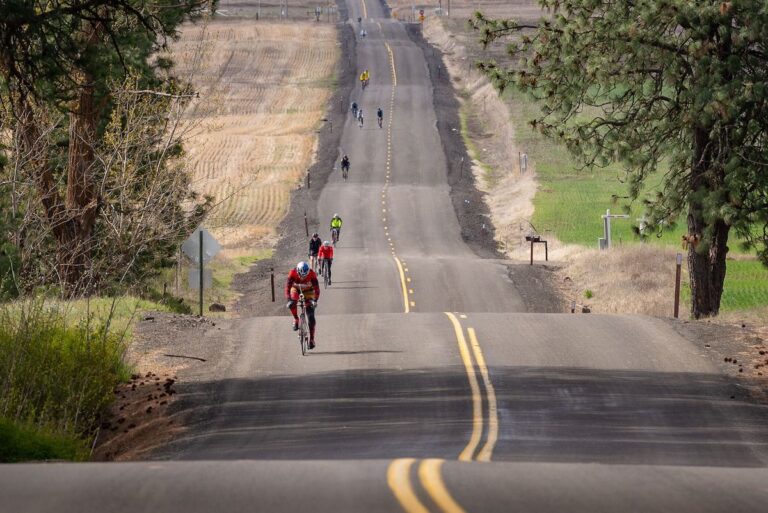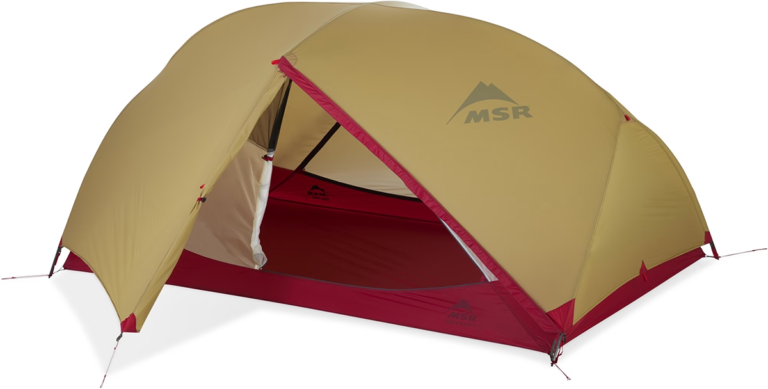For most daily bike commuters, the coming of snow dictates the end of the official riding season. Riding your bike in the snow can be fun. And I have lots of friends that like to ride recreationally in the snow. But bike commuting day-in and day-out through the snow is practiced by only a handful of hearty Spokanites. I talked to three of these year-round commuters to find out what it takes to transition from a daily bike commuter a snow commuter.
I talked to my neighbor, Dennis Medina, who rides just over 20 miles round trip daily; Bill Hansen, who rides about 11 miles a day to and from work; and Bill Bloom, who rides about 5 miles daily. Between the three of them, they have commuted through 16 Spokane winters.
I asked them all a bunch of questions about their experience as winter commuters. Here’s a summary of what they said.
GEAR
Of the three cyclists I talked to, two of them use the same bike for commuting year round. Bill Hansen, on the other hand, has three different bikes, each set up a bit differently to accommodate different weather or whims.
All of the cyclists put studded tires on their bikes right before the first snow hits. Bill Bloom and Dennis both ride 700c studded tires, which are narrower than mountain bike studs. Says Bill, “For riding on city streets in the snow I would rather have a narrow tire that can cut through the crud and get down to a firm surface.” Bill Hansen prefers a fatter tire and runs a dual suspension mountain bike with 2-inch studded tires. “The ground clearance on this bike is higher than normal … this helps me maneuver in deep snow,” says Bill.
Winter slush is dirty and sticky. Fenders are the norm on all of the commuter bikes these guys ride. Lights are obviously the norm as well. There is no consensus on a specific light, but I found it interesting that none of these commuters use a generator light; all lights are battery powered. For visibility, reflective jackets, vest, and stickers are also well-used by this crew.
CLOTHING
Since Bill Bloom’s commute is only about two miles down the south hill, he can wear the same outer shell (rain pants and jacket) over his dress pants and shirt just about every day. The other two commuters, who have longer commutes and tend to work up a sweat on the way to work, have to think more about layering to accommodate the weather conditions they’ll encounter. Dennis, whose commute is over 10 miles and traverses the city, has a basic winter kit that includes a knit hat, wraparound glasses, long sleeve synthetic top, wind stopper jacket, gloves, bike liners, tights, regular and Gore-Tex socks. As it gets colder, he adds warmer gloves, wind barrier under wear, and long underwear. For temperatures under 20 F or so, Dennis will add insulated over-boots and a windproof balaclava.
Bill Hansen has a variety of boots and SPD shoes to swap out as the weather conditions change. For really cold mornings, he’ll use motorcycle gauntlets for his hands.
RIDING
I was curious what kind of conditions will push these cyclists to an alternate mode of travel. How deep does the snow have to be? How does the weather change their routes, if at all?
The deep snow fall last winter provided a good test. Generally speaking, when the snow berms became so deep that cars could not pass them, the cyclists would take side streets. If the side streets were too rutted then Dennis took a bus or carpooled, Bill Bloom walked, and Bill Hansen drove.
For fresh snow falls, another method is to get out before the cars create ruts, or to take low-travel streets that still have fresh snow to cut. It’s much easier to cut through fresh snow on a bike than it is to try and ride ruts, or bust through snow berms.
WHY?
I asked these guys why they continue to commute in the winter. And I asked them to offer a bit of advice to cyclists who are considering the leap to winter commuting.
Bill Bloom: “I need to get to work. It is still better than driving and the cold doesn’t bother me. For me commuting on a bike is pure fun… I love riding in the cold and in the snow. If gas and parking were free I would still ride a bike.” His advice, “Get comfortable riding on snow and ice so you know what your limits are.”
Bill Hansen: “Initially, I rode year-round for the challenge. After a while my co-workers expect me to ride in all conditions. I don’t want to give them the satisfaction of seeing me drive in.” Bill’s advice: “Give yourself lots of time, mainly in dealing with gear.”
Dennis Medina: “Why? Why not, it’s actually fun, but you have to be much more observant. Plus people are definitely not looking for you… so you have to be extra cautious.”
Dennis’ advice: “I guess ride in inclement conditions a bit and remember the days are much shorter so you ride in the dark a lot.”
John Speare grew up and lives in Spokane. He rides his bike everywhere. Check out his blog athttp://cyclingspokane.blogspot.com.












